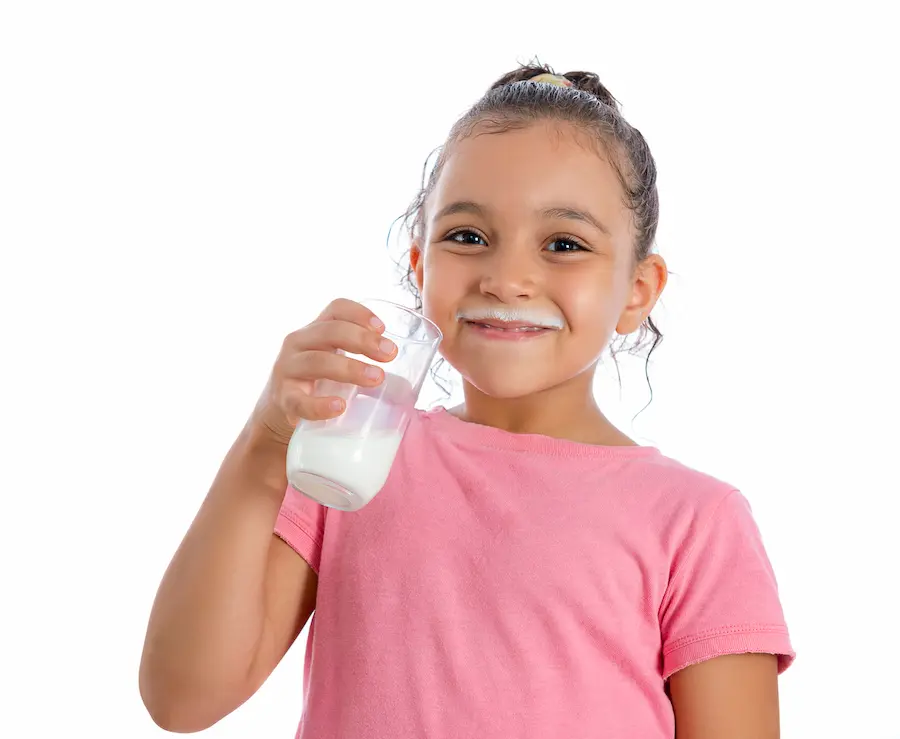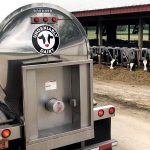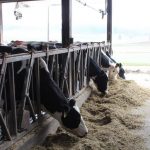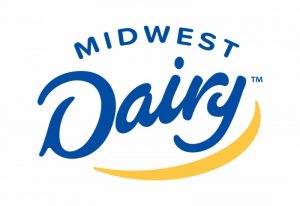
The dairy industry is one of the most important sectors of the global economy, responsible for generating billions of euros in revenue and jobs.
Dairy products are an important source of protein, calcium and other nutrients essential for human health.
The Top 10 dairy farms in the world represent a large global dairy production. Most of these farms are also responsible for providing a wide range of dairy products to consumers around the world. [1]
In this article we will provide the readers with a brief description of the Top 10 dairy processing companies, that, in total, are responsible for processing 16.28% of world milk production.
Top 10 dairy processing companies in the world
The table below presents the top 10 milk processing companies worldwide based on the amount of milk received in the year 2020, according to the eDairy News:[2]
| Ranking 2020 | Company | Country of origin | Reception of milk (million tons) |
| 1st position | Dairy farmers of America | USA | 28.6 |
| 2nd position | Groupe Lactalis | France | 21.7 |
| 3rd position | Fonterra | New Zealand | 18.7 |
| 4th position | Arla Foods | Denmark and Sweden | 13.7 |
| 5th position | Nestlé | Switzerland | 13.6 |
| 6th position | Friesland Campina | Netherlands | 11.8 |
| 7th position | Saputo | Canada and USA | 10.5 |
| 8th position | The MUL | India | 10.3 |
| 9th position | Yili | China | 9.6 |
| 10th position | Mengniu | China | 9.0 |
| Total | 147.5 | ||
It is important to highlight that these top ten companies receive about 147.5 million tons of milk, representing 16.28% of total milk produced in the world.[3]
At the top comes Dairy farmers of America (DFA), with 28.6 million tons of milk received. It is an American cooperative founded in 1998 and is made up of around 11,000 family producers from across the country. The cooperative is committed to the land, its animals, and the families they feed. DFA produces a variety of dairy products such as milk, cheese, butter, yogurt, and ice cream. DFA is the largest dairy cooperative in the world.[4]
In second place comes the Lactalis Group, which collects 21.7 million tons of milk. French company, founded in 1933 by André Besnier and headquartered in Laval, France. The company operates in more than 90 countries and employs around 80,000 people. The Lactalis Group produces a wide range of dairy products, including milk, cheese, yoghurt, butter and cream, although it also produces other food products such as juices, vegetable drinks and ready meals. This group includes several brands, the best known of which are Lactalis, Parmalat, Président, Alpro among others. It is a successful company with a strong global presence and is well positioned to continue growing in recent years.[4], [5]
Third place is occupied by Fonterra, a New Zealand dairy cooperative founded in 1971, Fonterra, collects 18.7 million tons of milk. Like the Lactalis group, it produces a variety of dairy products, but also other food products such as vegetable drinks, juices and ready-to-eat meals. Fonterra is a leading global dairy company that is committed to sustainable growth and social responsibility. The group is a cooperative with around 10,500 dairy producers and the company controls around 30% of the world’s dairy exports.[6]
Next is Arla Foods. It is a Danish cooperative based in Arhus, Denmark and is the largest dairy producing company in Denmark, recording a milk storage of 13.7 million tons. Arla Foods resulted from the merger between the Swedish dairy cooperative Arla and the Danish dairy company MD Foods, on April 17, 2020. This company is very interested in sustainability. Proof of this is that from August 2023, producers who are taking measures to reduce their carbon footprint will be rewarded through a new sustainability incentive model. The company is committed to reducing carbon dioxide emissions by 30% by 2030. A total of 500 million euros will be allocated to motivating and rewarding its producers for their climate action.[7]

Nestlé comes in fifth place. It is a Swiss multinational food and beverage company, founded in 1866 by Henri Nestlé. Its headquarters are in Vevey, Switzerland. The company receives 13.6 million tons of milk. It operates in more than 180 countries and employs around 280,000 people. Nestlé produces a wide range of food and drink products including baby food, pet food, coffee, tea, ice cream, chocolate, mineral water, frozen food, confectionery and health and nutrition products. It sells well-known brands such as Nestlé, Nespresso, Purina, KitKat, Maggi, Nesquik among others.[8]
Then there is Friesland Campina, which is a Dutch multinational dairy cooperative, based in Amersfoort, Netherlands. It results from the merger of Friesland Food and Campina on December 30, 2008. This company, which produces 13.6 million tons of milk, is a nutrition company with a strong presence in dairy products. It employs 21,715 employees and has branches in 30 countries, exporting to more than 100 countries around the world. Friesland Campina supplies consumer products such as milk, yogurt, cheese, infant nutrition, desserts, cream and also semi-finished products to infant nutrition producers, the food industry and the pharmaceutical sector. Includes famous brands such as Optimel, Yoplait, Provamel and others.[9]
After comes Saputo. It is a Canadian dairy company based in Montreal, founded in 1954 by the Saputo Family, employs around 16,000 people and is present in more than 30 countries. Acquires 10.5 million tons of milk. It produces, markets and distributes a wide variety of dairy products such as cheese, fluid milk and creams with an extended shelf life. The company has expanded through mergers and acquisitions and sells in more than 60 countries around the world, with half of its revenue coming from US operations. Some of Saputo ‘s more recognized brands include Dairyland, Galbani and Stella.[10]
The eighth company is Amul, in India which stores 10.3 million tons of milk. It is an Indian dairy cooperative, founded in 1946. It is the largest dairy company in India and one of the largest in the world. This company employs 3.6 million people. Amul operates mainly in the Indian market, although it also exports to more than 50 countries. Some of Amul ‘s top brands include Sagar, Gold, Fresh among others.[11]
In ninth place is Yili, a Chinese dairy company founded in 1993. Yili is the market leader in China for many dairy products, including milk, cheese, yogurt and butter, giving it a solid foundation for growth. Yili secures an amount of 9.6 million tons of milk. It spans more than 20 countries and employs around 100,000 people. Some of Yili ‘s more famous brands include Yili Pure Milk, Yili Yogurt, Yili Cheese and Yili butter.[12]
Finally, in tenth position appears the Chinese company Mengniu, which collects 9.0 million tons of milk. It is a Chinese company, founded in 1999, in Inner Mongolia, and is the second largest dairy company in China. It operates in more than 20 countries and employs around 50,000 people. Some of Mengniu ‘s top brands include Mengniu Milk, Mengniu Yogurt, Mengniu Cheese and Mengniu butter.[13]
Take home messages
The global dairy industry is a major economic sector, with the top 10 dairy farms and milk processing companies producing, receiving and processing over 147 million tons of milk each year. These companies produce a wide range of dairy products, from milk and cheese to yogurt and ice cream, which are consumed by people all over the world.
The dairy industry is also a significant employer with about 600 million people living in farms and other 400 million working in this industry all around the world. In addition, the dairy industry is dependent and thus linked to many other businesses, such as feed suppliers, transportation companies, and packaging manufacturers.
The dairy industry is facing several challenges, including climate change, increasing competition from plant-based alternatives, and rising costs of production. However, the industry is also innovating and developing new products and technologies to meet the changing needs of consumers.
The dairy industry is well-positioned to continue to grow in the future. According to estimates from the OCDE on 29th September of 2020, the global milk production is increasing faster and should grow up 1,6% a year in the next 10 years reaching 997 million tons in 2029.
The global population is growing, and people in developing countries are consuming more dairy products as their incomes rise. The dairy industry is also playing an increasingly important role in sustainable agriculture and nutrition.
References
[1] IFCN Dairy research Network, “ Top 20 Dairy Processors ’ impact on the world is understated”, [Online]. Available: https://pt.scribd.com/document/487392297/PPPP-Press-Article-30112020
[2] IFCN Dairy Research Network, “[Press release] Top Dairy Processors commit to climate goals and show strong performance in challenging times.” Accessed: Sep. 11, 2023. [Online]. Available: https://ifcndairy.org/top-dairy-processors-commit-to-climate-goals/
[3] FAO, “DAIRY MARKET REVIEW,” Apr. 2021. Accessed: Oct. 11, 2023. [Online]. Available: https://www.fao.org/3/cb4230en/cb4230en.pdf
[4] “Dairy Farmers of America.” Accessed: Sep. 11, 2023. [Online]. Available: https://www.dfamilk.com/
[5] “Groupe Lactalis.” Accessed: Sep. 11, 2023. [Online]. Available: https://www.lactalis.com/
[6] “Fonterra.” [Online]. Available: https://www.fonterra.com/nz/en.html
[7] “Arla-your global dairy companie.” Accessed: Sep. 11, 2023. [Online]. Available: https://www.arla.com/
[8] “Empresa Nestlé.” Accessed: Sep. 11, 2023. [Online]. Available: https:www.nestleprofessional.pt
[9] “Friesland Campina.” Accessed: Sep. 11, 2023. [Online]. Available: htpp://www.frieslandcampina.com
[10] “Saputo | Dairy Products and Cheese.” Accessed: Sep. 11, 2023. [Online]. Available: htpps://saputo.com
[11] “GCMMF :: Amul – The Taste of India .” Accessed: Sep. 11, 2023. [Online]. Available: https://amul.com
[12] “Yili Groupe.” Accessed: Sep. 11, 2023. [Online]. Available: https://www.yili.com
[13] “Mengniu Dairy.” Accessed: Sep. 11, 2023. [Online]. Available: https://mengniuir.com
























